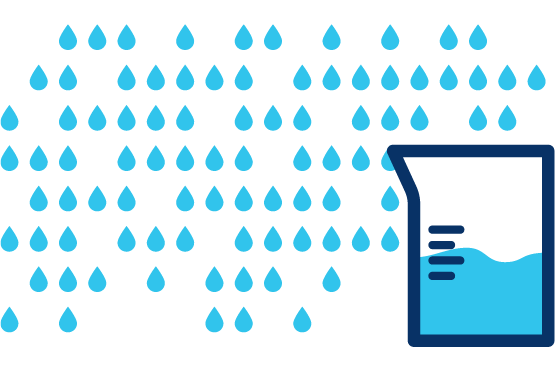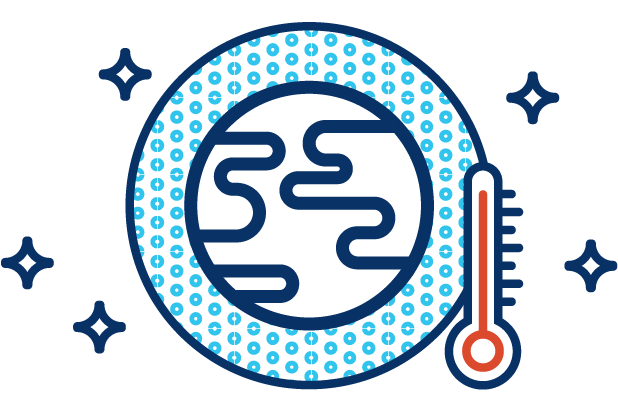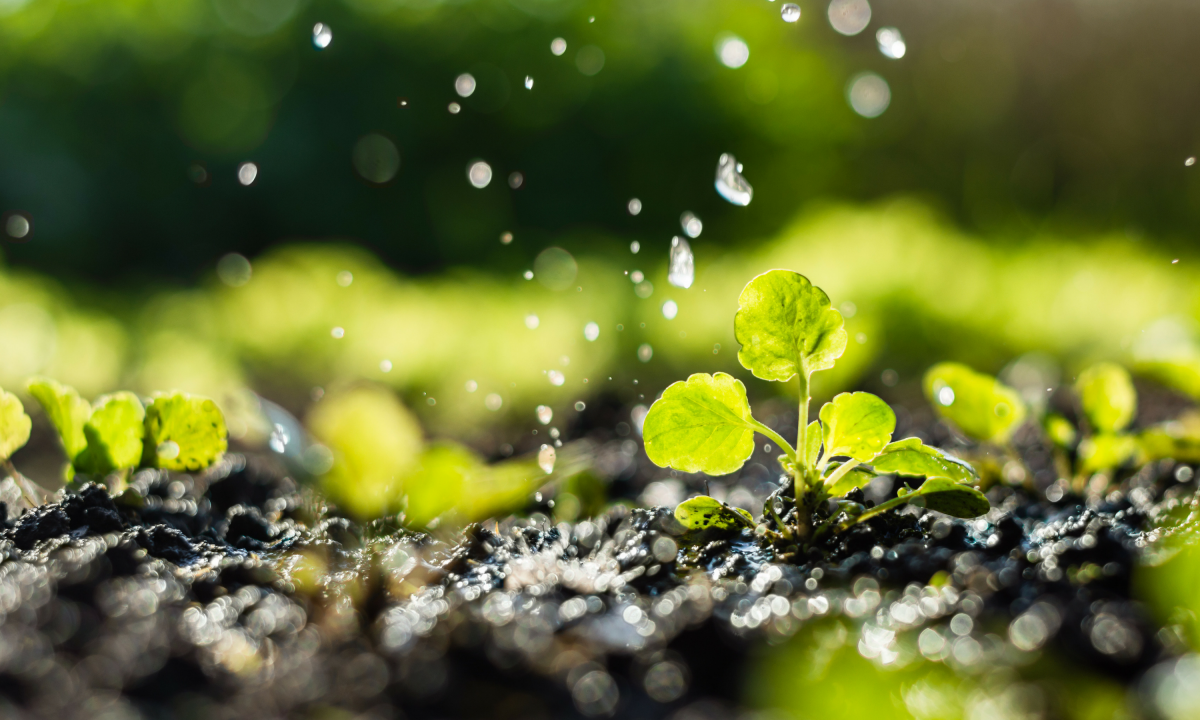A focus on irrigation infrastructure
SAGCOT aims to strengthen Tanzania’s agriculture sector. It foresees a total expansion of 350,000 hectares of agriculture land to increase production and processing of agricultural goods. 51,800 hectares of this expansion is foreseen in the Kilombero basin. Given this level of expansion, SAGCOT will create job opportunities and growth in agriculture production. It provides an important opportunity for improving farmers’ livelihoods. On the other hand, it will increase pressure on natural resources, in particular on the water resources needed for irrigation.
The SAVi assessment compares two irrigation technologies for the implementation of SAGCOT: flood irrigation and drip irrigation.
Externalities
The SAVi analysis values the following externalities:

Water use
Valuation of the use of water.

Additional irrigated land
Valuation of the additional revenues and costs related to the additional irrigated land. The use of drip irrigation saves water, which in turn allows for a larger area of land to be irrigated. While this boosts revenue and employment, it also requires additional capital investment and operating and maintenance costs.

Social cost of carbon
Valuation of carbon dioxide emissions through the social cost of carbon. The energy use and accompanying carbon dioxide emissions are higher for flood irrigation than for drip irrigation because a larger quantity of water has to be extracted.
Summary of Results
The
The Net Benefits
The net benefits include the correction for the externalities described earlier: water use, additional irrigated land and the social cost of carbon.

1. The SAGCOT Reference Scenario (SAGCOT flood): The implementation of SAGCOT with the use of flood irrigation, with the capital cost of the technology estimated at USD 81.50 per hectare.
Net benefit: USD 12.88 million

2. The SAGCOT Green Economy Scenario (SAGCOT drip, high capex): The implementation of SAGCOT with the use of drip irrigation, with the capital cost of the technology estimated at USD 3,000 per hectare.
Net benefit: USD 3.98 million

3. The SAGCOT Green Economy Scenario (SAGCOT drip, low capex) with the use of drip irrigation, with the capital cost of the technology estimated at USD 1,500 per hectare.
Net benefit: USD 39.21 million
SAVi Results
SAVi’s Integrated Cost Benefit Analysis (in USD millions)
| Scenarios | 1. SAGCOT flood | 2. SAGCOT drip (high capex) | 3. SAGCOT drip (low capex) |
| Capital investment | 3.26 | 57.43 | 29.59 |
| Operations & management (O&M) costs | 11.53 | 16.88 | 16.88 |
| Externality 1: Water costs | 89.97 | 74.71 | 74.71 |
| Externality 2: Costs of exploiting the additional land, unlocked because of the use of drip irrigation (capital and O&M costs) | 15.62 | 8.23 | |
| Externality 3: Avoided social cost of carbon* | 0.34 | 0.34 | |
| Revenue (incl. additional revenue from unlocked land in case of drip irrigation) | 117.65 | 168.61 | 168.61 |
| Net benefit | 12.88 | 3.98 | 39.21 |
* This cost will only be avoided if the energy used to provide water to the additional “unlocked” land will be renewable-based.
The SAVi integrated CBA further demonstrates that only in the case of a low CAPEX scenario would the net benefits of the use of drip irrigation outweigh those of flood irrigation.
The implementation of SAGCOT with flood irrigation will lead to a net benefit of USD 12.88 million compared to USD 39.21 million. The analysis also shows that the additional land that can be exploited for agriculture purposes in the case of the use of drip irrigation brings with it another additional cost of investment, ranging from USD 8.23 to USD 15.62 million. The revenue generated because of the additional production in the case of drip irrigation is higher (USD 168.61 million) than in the case of flood irrigation (USD 117.65 million).
SAVi results: Financial indicators
| Scenarios | IRR | NPV | DSCR | LLCR |
| Scenario 1: SAGCOT flood | 6.20% | (0.61) | 1.18x | 1.19x |
| Scenario 2: SAGCOT drip (high capex), including externalities | 6.04% | (12) | 1.22x | 1.22x |
| Scenario 3: SAGCOT drip (low capex), including externalities | 13.42% | 10 | 2.33x | 2.34x |
SAVi simulation on the financial performance of SAGCOT
The internal rate of return (IRR) and net present value (NPV) indicate the financial viability of the project. In other words, they calculate whether the project can pay back investors and still generate a sufficient return. Flood irrigation generates a positive IRR of 6.20
The debt service coverage ratio (DSCR) and the loan life coverage ratio (
Flood irrigation maintains a sufficient level of DSCR and LLCR during the life of the loan with 1.18x and 1.19x. In scenarios 2 and 3 the credit ratios of both the high and low capex versions outperform the flood irrigation scenario, e.g., minimum DSCR 1.22x and 2.33x respectively.
Of course, the inclusion of the value of externalities does not make the cash flows less or more robust in reality. The purpose of this exercise is to demonstrate that, when taking a high-level macro perspective, sustainability can have a positive impact on the financial health of public infrastructure investments.
By 2030 the implementation of SAGCOT with drip irrigation is estimated to provide 8
per cent more employment and 8per cent more agriculture production and use 14per cent less water compared to flood irrigation.
SAVi results: Projections on water use, employment and agriculture production
| Projections for 2030 | BAU (without SAGCOT) | SAGCOT with flood irrigation | SAGCOT with drip irrigation* | Net benefits from drip irrigation compared to flood irrigation |
| Water use from agriculture (billions litres/year) | 84.8 | 95.3 | 82 | -14 % |
| Employment (full-time equivalent) | 263,303 | 278,693 | 300,787 | +8 % |
| Agriculture production (tonnes/year) | 299,462 | 305,987 | 330,365 | +8 % |
* Irrespective of a higher or lower
Access the report or brochure of this assessment online to learn more.
